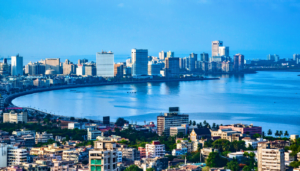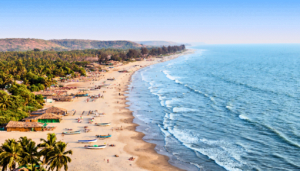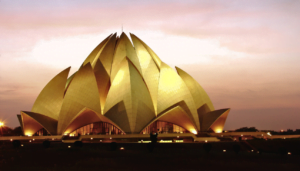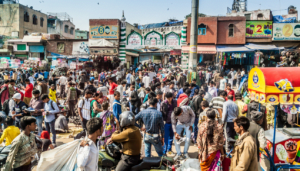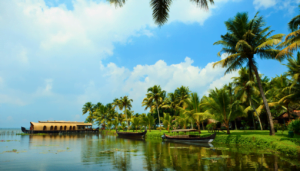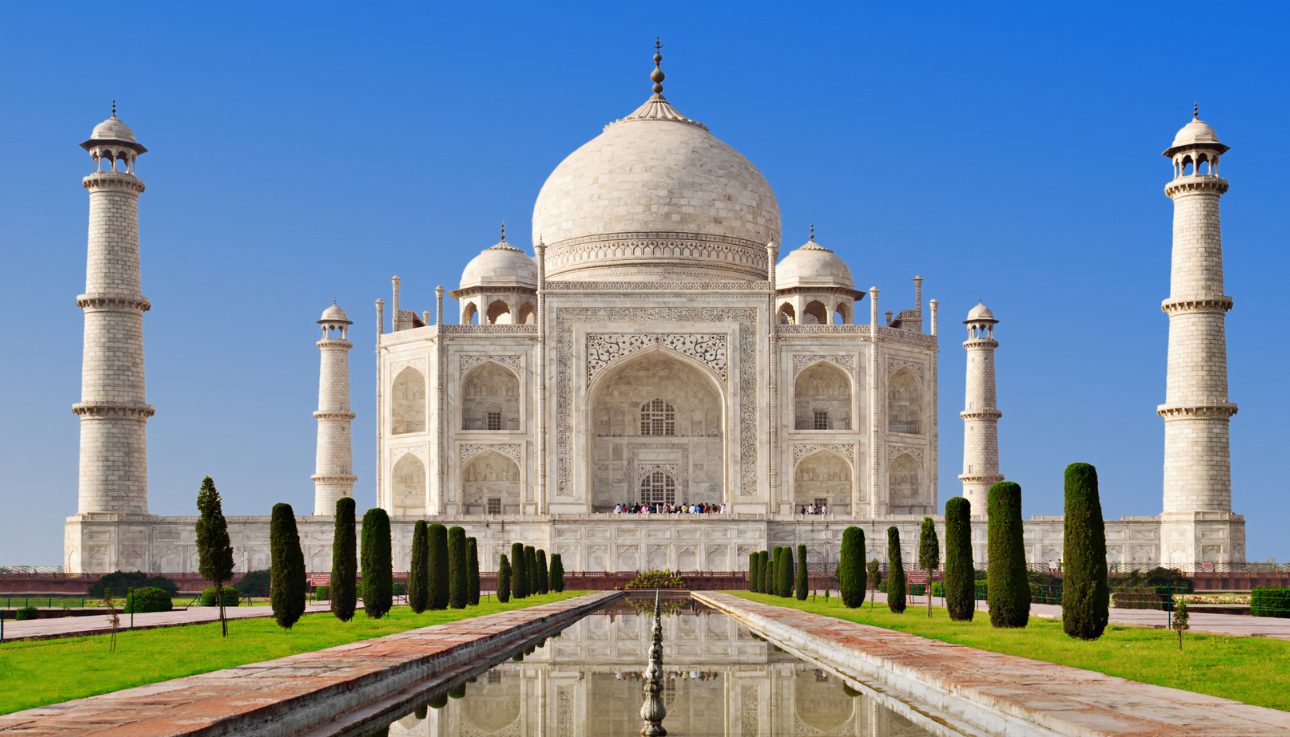
Why Is India A Interesting Place To Visit
If you are curious about discovering the wonders of India for yourself, this overview should help you in knowing more about India before you travel there.
India, a land of astonishing diversity and rich heritage, is a tapestry woven within the threads of numerous cultures, languages, and traditions. This vast country, stretching from the snow-capped Himalayas in the north to the sun-kissed beaches of the south, offers a geographical diversity as varied as its cultural richness. Its landscape encompasses everything from the Thar Desert’s arid expanses to the lush greenery of the Western Ghats, making it a geographical marvel.
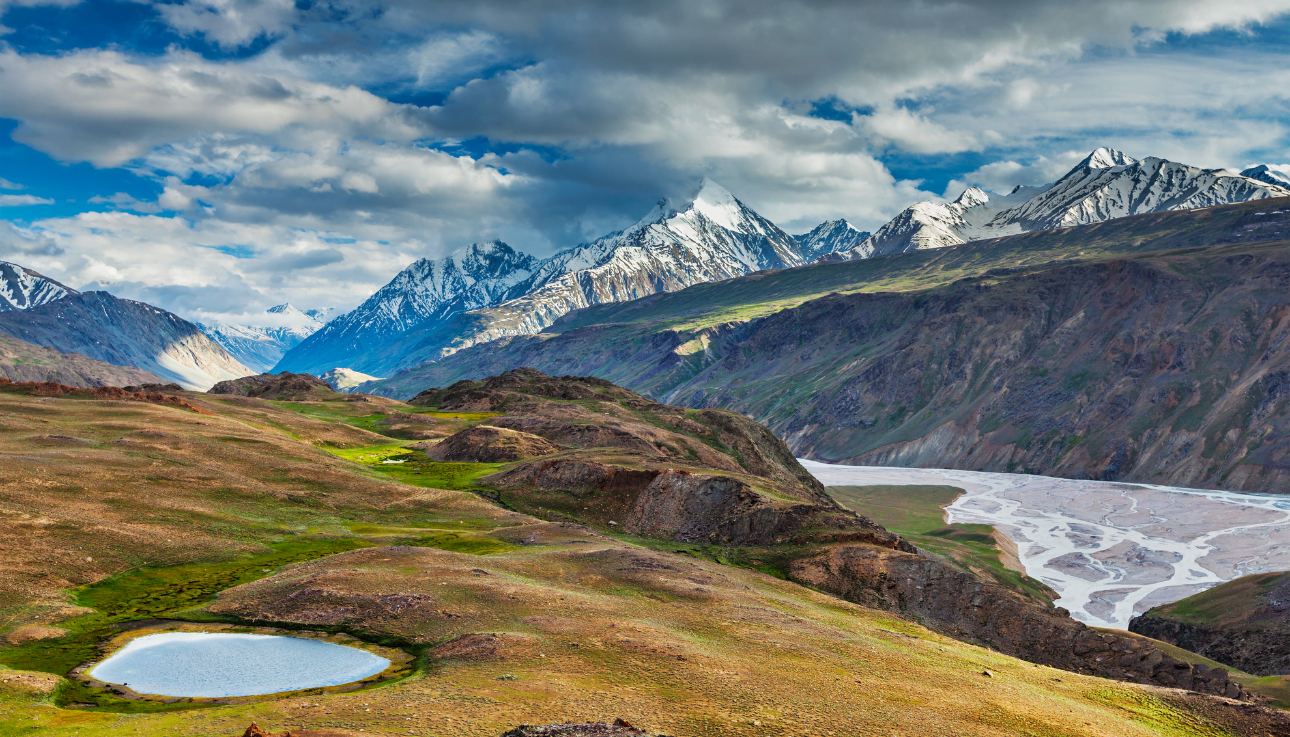
India’s history is a saga that dates back millennia, with each era leaving its indelible mark on the country’s cultural fabric. Ancient civilizations thrived along the banks of their mighty rivers, giving birth to religious and philosophical ideas that continue to resonate worldwide. The Mauryas, the Guptas, the Mughals, and the British, among others, have all shaped the country’s unique historical narrative.
The cultural richness of India is unparalleled. With over a thousand languages spoken and myriad ethnic groups, it’s a land where diversity is celebrated in every aspect of life. From vibrant festivals like Diwali and Holi that paint the country in a riot of colors to the quiet spiritual serenity of Varanasi and the rhythmic chants of Vedic hymns, India’s cultural landscape is as diverse as it is profound.
Cuisine, music, dance, and art flourish in various forms nationwide. Each region has distinct flavors, melodies, dance forms, and artistic expressions, contributing to the country’s rich cultural mosaic. The classical dance forms like Bharatanatyam, Kathak, and Odissi, or the folk traditions like Bhangra and Garba, each tell a story of India’s cultural evolution.
In essence, India is not just a country; it’s a celebration of life, a symphony of colors, and a dance of diversity and unity. It’s a land where the ancient and the modern coexist, creating a unique blend that fascinates and enthralls. From the majestic Taj Mahal to the serene backwaters of Kerala, every corner of India offers an experience, a story, and a legacy that continues to enchant the world.
Why Travel To India
India stands as a unique travel destination, a country where the past and present merge to create an experience unlike any other. It’s a land that beckons travelers with its blending of ancient traditions and modern developments, offering an array of experiences that cater to every kind of wanderlust.
One of the most compelling reasons to visit India is its astonishing cultural diversity. This diversity is not just limited to cultural practices and traditions but extends to languages, cuisines, and lifestyles. With each state, and sometimes each city, comes a different language, a distinct culinary tradition, and a unique way of life. This kaleidoscope of cultures makes every journey through India a discovery, an exploration of varied human expressions and experiences.
The historical grandeur of India is palpable in its myriad ancient temples, forts, and palaces. From the architectural marvels like the Taj Mahal and the forts of Rajasthan to the spiritual serenity of Varanasi and the ancient temples of Tamil Nadu, each monument tells a story of India’s rich historical past. These ancient structures are not just tourist sites; they are living testimonies of India’s diverse history, each with its own story to tell.
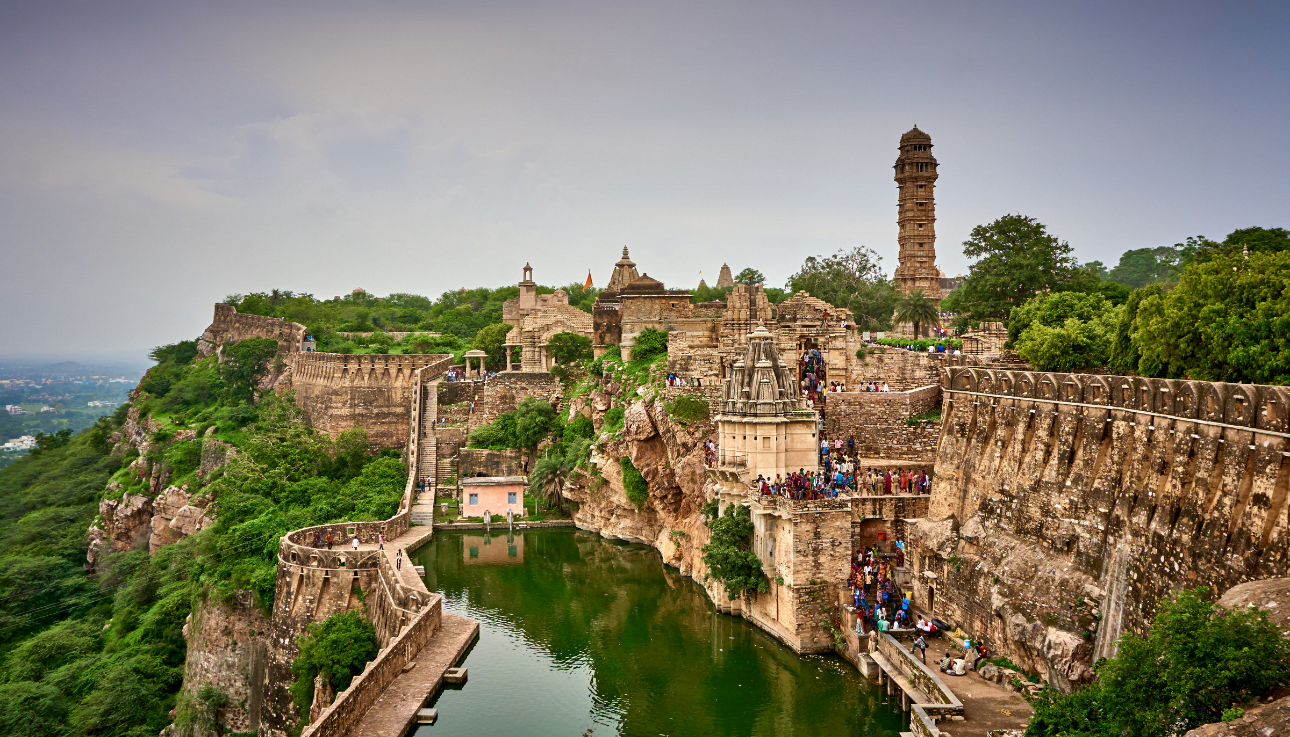
Amidst these historical wonders, modern India thrives. Cities like Mumbai and Bangalore pulsate with contemporary life, showcasing India’s progress in technology and urban development. These cities offer a contrast to the historical sites, displaying a different facet of India’s identity – one that’s rooted in the present and looking towards the future.
The culinary experiences in India are as diverse as its cultures. Every region in India offers its unique flavors and dishes. The spicy street food of Delhi, the sumptuous thalis of Gujarat, the seafood delicacies of coastal areas, and the rich biryanis of Hyderabad are just a few examples of the culinary delights that await travelers. Indian cuisine is an integral part of the country’s cultural expression, and each dish has its own story.
Moreover, India’s varied landscape offers a multitude of experiences for nature and adventure lovers. From the trekking trails in the Himalayas to the backwaters of Kerala, from the wildlife sanctuaries of Madhya Pradesh to the beaches of Goa, the natural beauty of India is as varied as it is breathtaking.
Visiting India is not just a journey through a country; it’s an exploration of a civilization. It’s a chance to immerse oneself in a world where ancient traditions seamlessly blend with modernity, where every street and every city has its unique rhythm and character. It’s a destination that challenges and changes you, leaving you with memories that last a lifetime. For the traveler seeking diversity, history, and a rich tapestry of cultural experiences, India is the ultimate destination.
Popular Destinations
India, with its vast and varied landscape, offers a variety of destinations that cater to every kind of traveler. From India’s historic landmarks to its natural wonders, here are some of the most popular destinations in India:
-
- Taj Mahal, Agra: One of the Seven Wonders of the World, an epitome of love, The Taj Mahal is a white marble mausoleum and a UNESCO World Heritage site. It’s not just a monument but a symbol of India’s rich history and architectural prowess.
- Jaipur, Rajasthan: Pink City, as it is also known,’ Jaipur is famous for its historic palaces and forts, including the Hawa Mahal and Amer Fort. The city is a gateway to India’s royal past and vibrant culture.
- Kerala Backwaters: A network of interconnected rivers, canals, lakes, and inlets, the backwaters are a unique ecosystem. Houseboat stays in Kerala offer a serene and scenic experience of rural India.
- Goa: Renowned for its beautiful beaches, Portuguese heritage, and lively nightlife, Goa is a favorite among both domestic and international tourists looking for a relaxing seaside vacation.
- Varanasi: One of the oldest living cities in the world, Varanasi is the spiritual heart of India. The Ganges ghats and the evening aarti (prayer ceremony) are profound cultural experiences.
- Leh-Ladakh: For adventure enthusiasts and nature lovers, the high-altitude desert of Leh-Ladakh, with its stunning landscapes and Buddhist monasteries like Hemis and Thiksey, is a must-visit.
- Mumbai: India’s financial and entertainment capital, Mumbai, is a bustling metropolis known for its historic sites like the Gateway of India, vibrant markets, and a diverse culinary scene.
- Darjeeling: Famous for its tea plantations and the stunning views of the Himalayas, including Kanchenjunga, Darjeeling in West Bengal offers a tranquil retreat amidst nature.
- Rishikesh and Haridwar: These twin cities in Uttarakhand are known for their spiritual significance. Rishikesh is also the ‘Yoga Capital of the World’ and offers opportunities for adventure sports like river rafting.
- Mysore: Known for the opulent Mysore Palace, the city reflects the rich cultural heritage of Karnataka. Mysore is also famous for its yoga centers and the annual Dussehra festival.
Unique Attractions in India
India offers an array of unique attractions that provide deep insights into its diverse culture, spirituality, and natural beauty. Here’s a look at some of these attractions:
Spiritual Experiences
-
- Varanasi: Often referred to as the spiritual capital of India, Varanasi is a city that offers a profound spiritual experience. The city’s ghats (riverfront steps) along the River Ganges are the epicenter of spiritual activities. Witnessing the Ganga Aarti, a spectacular evening ritual with lamps and chants, is a mesmerizing experience. The ancient temples and the very ambiance of Varanasi evoke a sense of spirituality.
- Yoga Retreats in Rishikesh: Nestled in the Himalayas’ foothills, Rishikesh is a major pilgrimage center and the Yoga Capital of the World. The town is dotted with numerous yoga centers offering retreats and courses. The serene setting on the banks of the Ganges, surrounded by forested hills, makes it an ideal place for spiritual and physical wellness through yoga.
Wildlife Safaris
-
- Ranthambore National Park: Located in Rajasthan, this park is one of the largest and most renowned national parks in Northern India. It is particularly famous for its population of Bengal tigers. The park’s rugged terrain and the majestic Ranthambore Fort provide a unique backdrop for wildlife safaris.
- Bandhavgarh National Park: Situated in Madhya Pradesh, Bandhavgarh is known for its high density of Bengal tigers. The park also features ancient caves with prehistoric inscriptions and a striking fort.
- Kaziranga National Park: This UNESCO World Heritage Site in Assam is home to the world’s largest population of Indian one-horned rhinoceroses. The park’s unique landscape of grasslands, wetlands, and forests creates a biodiversity hotspot.
Cultural Festivals
-
- Diwali: Known as the Festival of Lights, Diwali is celebrated with great enthusiasm across India. Homes are lit with lamps, and fireworks light up the night sky. The festival, marking the victory of light over darkness, is a spectacular event that brings together families and communities.
- Holi: This festival of colors is a vibrant and joyous celebration marking the arrival of spring. People smear each other with colored powder and water, making it a lively and fun-filled event.
- Pushkar Camel Fair: Held in the town of Pushkar, Rajasthan, this annual fair is one of the largest camel fairs in the world. It’s not just a trading ground for camels but a cultural extravaganza featuring music, dance, and various competitions. The fair is a unique experience showcasing Rajasthan’s rich cultural heritage.
Each of these unique attractions in India offers an unforgettable experience, reflecting the country’s rich cultural tapestry, spiritual depth, and natural wonders.
Indian Culture and Traditions
India’s culture and traditions are as rich and diverse as its landscape, making it a melting pot of various artistic, culinary, and musical forms. Let’s delve into some of the key aspects that define India’s cultural tapestry:
Culinary Journey
-
- Indian cuisine is an amalgamation of flavors, spices, and cooking techniques, reflecting the country’s regional diversity. With its variety and zest, street food is an integral part of Indian food culture. Each region has its signature street food, from the chaats of Delhi to the vada pav of Mumbai.
- Fine dining in India offers a more refined culinary experience, often fusing traditional recipes with modern cooking styles. Restaurants across the country serve a range of dishes from different Indian states as well as international cuisines, catering to diverse palates.
- Indian sweets, or mithai, are an essential part of Indian cuisine, with each region having its own specialties. Sweets like rasgulla, jalebi, and ladoo are not just desserts but integral to Indian celebrations and festivities.
Art and Craft
-
- India’s rich heritage in arts and crafts is evident in its various traditional forms. Textiles in India, such as the intricate Kashmiri Pashmina shawls, vibrant Bandhani from Gujarat, and fine silk from Varanasi, are famous worldwide.
- In the realm of painting, Madhubani art from Bihar, known for its vibrant colors and intricate patterns, tells stories of nature, mythology, and social events. Similarly, Rajasthani block printing, with its unique designs and natural dyes, is a testament to the skill of Indian artisans.
- Other notable crafts include the delicate filigree work from Odisha, the exquisite marble inlay work from Agra, and the traditional pottery and terracotta work that vary from region to region.
Music and Dance
-
- Indian classical music, with its two major traditions, Hindustani (North Indian) and Carnatic (South Indian), has a rich history and is deeply embedded in the country’s cultural ethos. Instruments like the sitar, tabla, and sarod are central to these traditions.
- Dance in India is an expression of storytelling, spirituality, and passion. Classical dance forms like Bharatanatyam from Tamil Nadu and Kathakali from Kerala are not just art forms but deeply rooted in India’s history and mythology.
- Each region in India also has its folk music and dance traditions, often associated with specific festivals and agricultural seasons. These folk forms are an expression of the local culture and social customs.
Indian culture and traditions, with their myriad forms and expressions, offer a glimpse into the country’s soul. They are not just practices but a way of life that continues to evolve while keeping its historical essence intact.
Travel Tips and Practical Information
Visiting India can be an exhilarating experience, but it’s essential to be well-informed to make the most of your trip. Here’s a guide to help you navigate through the practical aspects of traveling in India:
Best Time to Visit
-
- India’s vast geographical diversity can result in varying climates across different country regions. Generally, the best time to visit is during the time between October and March, when the weather is more likely to be cool and pleasant.
- The summer months (May to September) are ideal for the Himalayan region, as the rest of the year can be cold. Conversely, the southern states are best visited in the winter months to avoid the extreme heat and humidity of the summer.
Transportation in India
-
- Trains: The Indian railway network is extensive and offers an affordable way to travel long distances. However, book your tickets in advance, especially for long journeys, as trains can get crowded.
- Buses: Buses connect almost every part of the country and range from basic to luxury coaches.
- Domestic Flights: Domestic flights provide a convenient option for covering large distances quickly. Several budget airlines operate in India, offering competitive fares.
Accommodation
-
- India boasts a wide range of accommodations to choose from. Luxury hotels provide world-class amenities and are available in most big cities and tourist spots.
- Budget travelers can find hostels and guesthouses, which are economical and often offer a more local experience.
- Homestays are also popular, providing a glimpse into the Indian way of life and often including home-cooked meals.
Cultural Etiquette
-
- Dressing conservatively, especially in religious sites, is recommended. Removing shoes before entering temples and other sacred places is customary.
- Showing respect for local customs and traditions is important. For instance, greeting with a ‘Namaste’ (hands pressed together at the chest) is universally accepted and appreciated.
- Tipping is common in India; however, the amount varies depending on the service.
Health and Safety
-
- As for Vaccinations, Asking your healthcare professional about any vaccinations you may need before traveling is recommended.
- Drinking bottled or purified water is advisable to avoid waterborne diseases. Also, be cautious with street food, although it’s a significant part of Indian cuisine.
- Visa requirements will vary depending on your home country. Ensure that you check the latest requirements and apply in advance.
- Common travel concerns include negotiating with tuk-tuk drivers and dealing with occasional crowds. It’s advisable to agree on fares before starting a journey and to keep an eye on personal belongings in crowded places.
Being mindful of these aspects can significantly enhance your experience in India, making your journey as smooth and enjoyable as possible
Conclusion
Traveling to India is more than just a journey; it’s a transformative experience that stays with you long after you return home. This land of contrasts, with its rich tapestry of cultures, traditions, and landscapes, offers an adventure that challenges, delights and educates. From the spiritual serenity of its temples to the chaotic charm of its bustling cities, from the flavorsome delights of its cuisine to the rhythmic grace of its dance forms, India promises a journey of the senses and the spirit.
As you plan your trip to India, embrace the adventure with an open heart and mind. You may have to step out of your comfort zone to immerse yourself in the vibrancy and diversity of this extraordinary country. Each corner of India has a story to tell, each experience a lesson to impart. Whether you’re seeking spiritual enrichment, cultural immersion, or just an escape from the mundane, India offers a canvas vast enough to fulfill every expectation.
Our website is a treasure trove of information for those intrigued by the allure of India and eager to delve deeper into what this magnificent country has to offer. We invite you to explore further articles that provide detailed insights into specific destinations, cultural practices, and travel tips. From comprehensive guides on the majestic Himalayas to intimate looks into the local festivals, from advice on navigating the culinary scene to tips for sustainable travel, our content is designed to help you craft the perfect Indian adventure. So, continue your journey of discovery with us, and let us help you unlock the myriad wonders of India.
